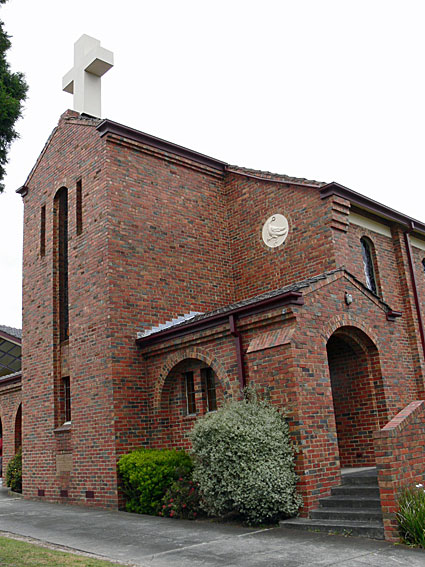
St Oswald's Church, Glen Iris: view of main façade showing the baptistery
[photograph by John Maidment (26 October 2013)]

St Oswald's Church, Glen Iris: view of main façade showing the baptistery
[photograph by John Maidment (26 October 2013)]
Historical and Technical Documentation by John Maidment
© OHTA, 2013 (last updated October 2013)
The first Anglican services were conducted in the area in 1895, then a farming community. The first vicar was appointed in 1925 and a brick hall, which doubled as a masonic lodge, was erected to the designs of architects Dossetor and Frew. This building was dedicated on 25 June 1927 and remained until it was destroyed by fire in 1962.1
The present church was designed by Louis R. Williams and Wystan Widdows. The foundation stone was laid on 6 August 1955 and dedicated on 31 August 1957. Louis Reginald Williams (born Hobart 1890-1980) was the leading Australian church architect of the period and was responsible for such buildings as St John's Camberwell and St Andrew's Brighton. On 12 July 1964, the church hall, designed by Wystan Widdows (born Derby 1912-1982) and David Caldwell, was dedicated. Widdows also designed St Francis-in-the-Fields at Mooroolbark, where he lived, and St Peter's Paynesville.
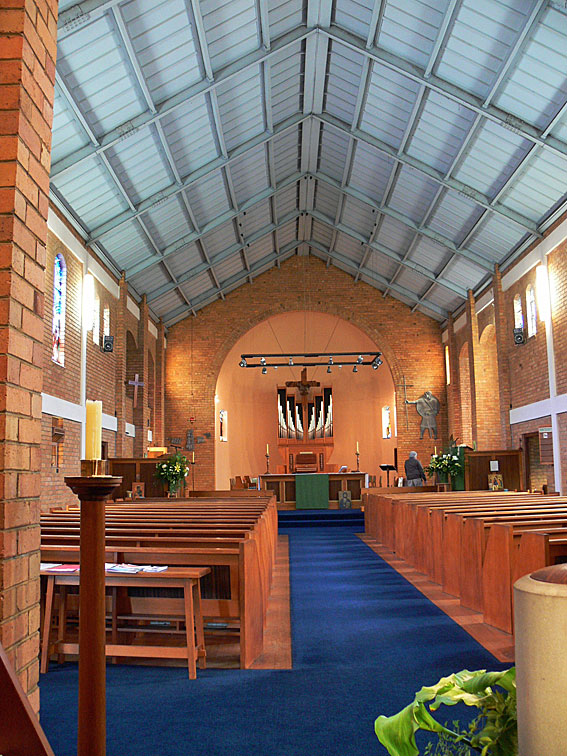
St Oswald's Church, Glen Iris: view of interior from the baptistery
[photograph by John Maidment (26 October 2013)]
The church is designed in a simplified Romanesque idiom and constructed in clinker brick externally and cream brick internally, both of which were favoured materials after the second world war. The interior focuses upon a large apse and there is a transept and chapel to the right.
The church contains a number of fine works of art. The stained glass windows in the sanctuary and above the baptistery are the work of Hungarian-born Bela Kozak while eight windows in the nave are the work of David Wright, installed 1984-1991. The font was made in 1967 by Clifford Last, the hanging crucifix by Mark Weichard, dating from 1980, the sculptures The Ascension of Christ (1991), St Oswald King and Martyr (1991) and The Betrayal of Christ (2004), all by Thomas Rossmann.2
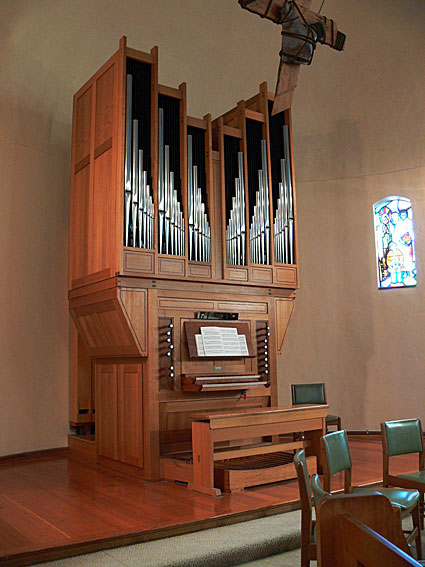
St Oswald's Church, Glen Iris: the organ viewed from the sanctuary
[photograph by John Maidment (26 October 2013)]
The organ, one of the finest small instruments in a Melbourne church, was built in 1989 by Knud Smenge. It is fully encased, with mechanical key and stop action and has a case in Tasmanian oak with Tasmanian blackwood used for the console details and inlays. The drawstop labels and nameplate are made from porcelain. The manual pipework is placed on a common slider chest. It is favourably placed behind the main altar where its sound projects very successfully throughout the church. The case design and raked feet of the façade pipes have been designed to complement the hanging cross placed above the organ. John Maidment was the adviser for the work.
| MANUAL I Rohrfl. Sp.Gamba Principal Waldfl. Mixture II-I MANUAL II Gedackt Koppelfl. Principal Schalmey Tremulant PEDAL Subbass Gedackt I-P II-P |
8 8 4 2 III-IV 8 4 2 8 16 8 |
grooved bass A A |
Compass: 56/30
Mechanical key and stop action3
1 St Oswald's Anglican Church, Glen Iris: 1925-1976.
2 Church website, accessed 26 September 2013: http://www.stoswaldsgleniris.net.au/ and information from Dr Bronwyn Hughes
3 Details of organ noted by author 1989
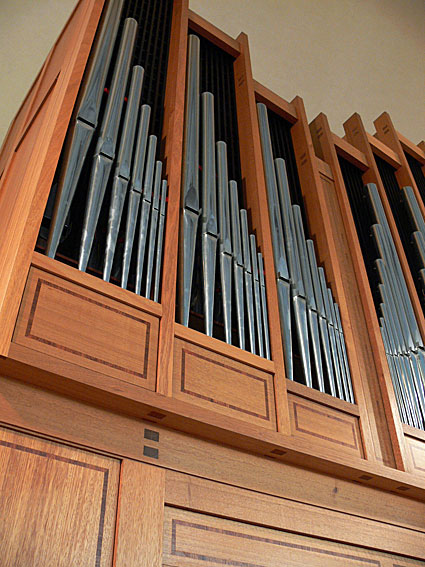
St Oswald's Church, Glen Iris: casework
[photograph by John Maidment (26 October 2013)]

St Oswald's Church, Glen Iris: left stop jamb
[photograph by John Maidment (26 October 2013)]

St Oswald's Church, Glen Iris: right stop jamb
[photograph by John Maidment (26 October 2013)]
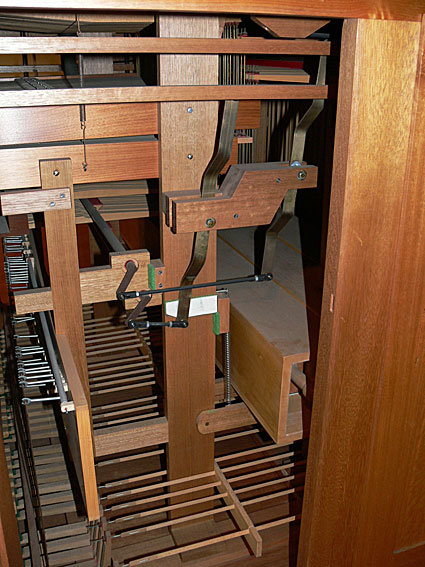
St Oswald's Church, Glen Iris: view of mechanism viewed through right hand case panel
[photograph by John Maidment (26 October 2013)]
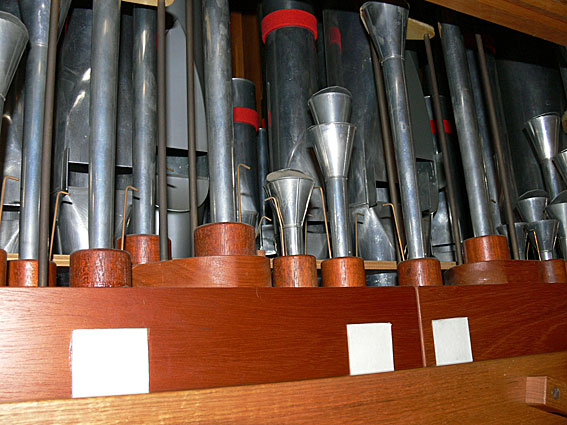
St Oswald's Church, Glen Iris: internal pipework showing the Schalmey
[photograph by John Maidment (26 October 2013)]